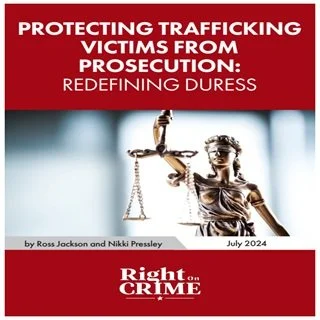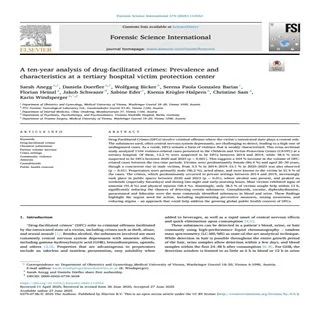By Sarah Anegg, Daniela Doerfler, Wolfgang Bicker, Serena Paola Gonzalez Barias, Florian Heinzl, Jakob Schwazer, Sabine Eder, Ksenia Krögler-Halpern, Christine Sam, and Karin Windsperger
Drug-Facilitated Crimes (DFCs) involve criminal offenses where the victim's intoxicated state plays a central role. The substances used, often central nervous system depressants, are challenging to detect, leading to a high rate of undiagnosed cases. As a result, DFCs remain a form of violence that is weakly characterized. This cross-sectional study analyzed 1104 violence-related cases presented to the Children and Victim Protection Center (CAVPC) at a tertiary hospital. Of these, 12.2 % were suspected to be DFCs between 2014 and 2019, while 38.5 % were suspected to be DFCs between 2020 and 2023 (p < 0.001). This suggests a 544 % increase in the volume of DFC-related cases between the two time periods. Victims were predominantly female (86.4 %) and aged 20–30 years, though a concurrent rise in male victims, from 3.5 % in 2014–2019–15.1 % in 2020–2023 was also observed (p = 0.01). Perpetrators were primarily male (96.2 %), acted alone, and were known to the victim in 51.9 % of the cases. The crimes, which predominantly occurred in private settings between 2014 and 2019, increasingly took place in public spaces between 2020 and 2023 (p = 0.01), where alcohol was present, and peaked on weekends (especially Saturdays) and during late-night and early-morning hours. Most victims exhibited signs of amnesia (91.8 %) and physical injuries (58.4 %). Alarmingly, only 38.5 % of victims sought help within 12 h, significantly reducing the chances of detecting certain substances. Cannabinoids, cocaine, diphenhydramine, paracetamol and lidocaine were the most commonly identified substances in blood and urine. These findings highlight the urgent need for action, including implementing preventive measures, raising awareness, and reducing stigma – an approach that could help address the growing global public health concern of DFCs.
Forensic Science International Volume 374, September 2025, 112552




